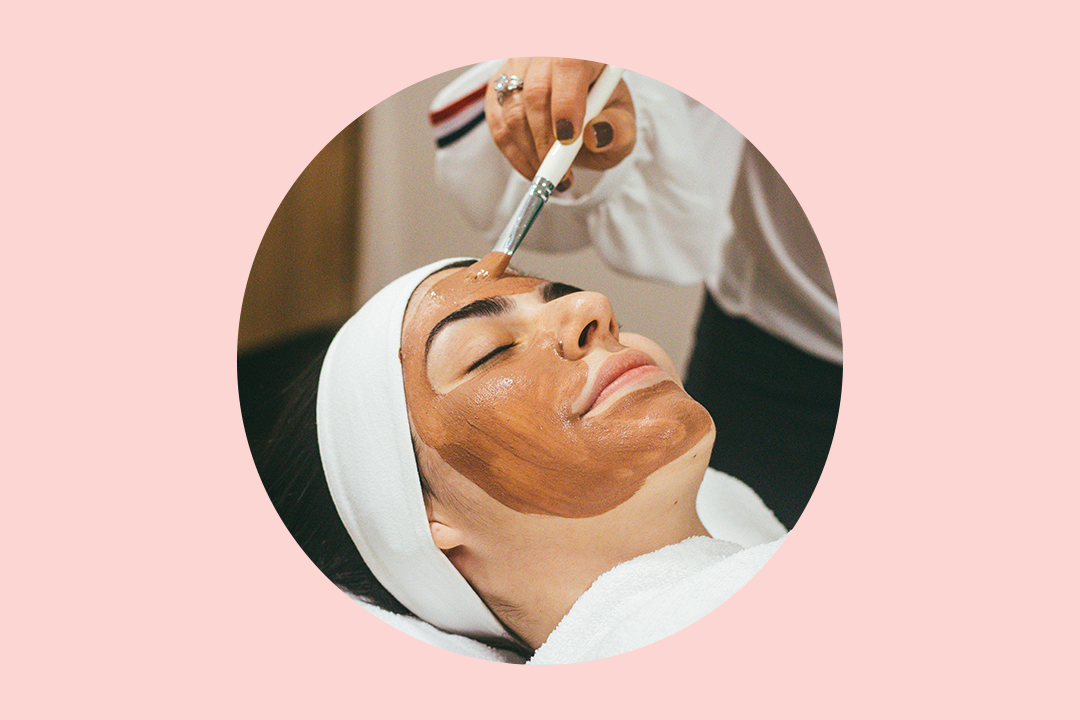- Expert advice/
- Fashion & beauty/
- Wedding Hair & makeup/
- What Are the Different Types of Facials for Brides?
- Wedding Hair & makeup
What Are the Different Types of Facials for Brides?
Looking to put forward a glowing face on your wedding day? Learn more about the different types of facials for brides.
Last updated February 5, 2024

The First Look ✨
- Keep your skin type, problem areas, and the results you want to achieve in mind, and then consult with a professional, licensed esthetician at least six months beforehand.
- Facials can range from a series of treatments over weeks and months to ones that you can do days or weeks before the wedding.
Looking to put forward a glowing face on your wedding day? A facial can prepare your skin for a full face of makeup—or no makeup at all. But, with so many types of facials out there now, it’s hard for even facial enthusiasts to stay up to date. Plus, there’s no one-size-fits-all facial for brides—it will depend on your skin, budget, and goals.
First, keep your skin type, problem areas, and the results you want to achieve for your wedding in mind. Then, be sure to consult with a professional, licensed esthetician at least six months before the big day to allow enough time for a few treatments and to see how your skin reacts to the regimen. Learn more about the different types of facials for brides.
Microdermabrasion
The gold standard of treatments, microdermabrasion is an advanced exfoliation technique that can involve tiny, finely ground crystals, sandpaper-like paddles, or a diamond tip with a vacuum to resurface new skin. It sloughs away the outermost dead layer of skin, helping to minimize the appearance of fine lines, wrinkles, acne scars, and hyperpigmentation. Plan for five to eight treatments over six to 12 weeks, but it’s a relatively gentle procedure, so no downtime is needed. Microdermabrasion is not recommended for those with rosacea or moderate to severe acne.
Oxygen Facial
Your skin, like all your body’s other organs, needs oxygen to survive, and it can thrive when it gets enough of it. An oxygen facial infuses the skin with O2 through specialized products or treatments, promoting a softer, brighter, and clearer-appearing complexion. This kind of facial is so gentle that you can even do one the morning of your wedding without the risk of redness or inflammation (provided you’ve already had one from the same esthetician, that is).
DNA Facial
Considered a natural alternative to Botox and fillers, this facial, which can be performed just days before the wedding, begins with microdermabrasion and an organic DNA peel, followed by a blend of active serums and a mask. The final step is microcurrent, which is a low-level current that mimics the body’s natural current to provide instant toning, firming, and anti-aging results.
LED Facial
Also called color light therapy, this trending facial uses four different wavelengths of LED light—each with a different therapeutic effect—to plump skin, reduce fine lines and wrinkles, and zap acne-causing bacteria, leaving skin appearing fresh and hydrated. This also triggers your body’s natural cell processes to increase cell turnover and repair the skin, which can address many skin issues from dullness to acne scars. These treatments can be on the more expensive side and involve four to eight sessions over a period of four to eight weeks.
Organic Facial
Keep things all-natural with an organic facial that uses natural ingredients, such as skin-friendly fruits (papaya and banana, for example), moisturizing honey, and antioxidant-rich green tea. These treatments are popular with those with normal to dry skin, but consider any allergies first. Some of these facials can be done at home, but salons can include cleansing and exfoliating treatments too.
High-Frequency Facial
Reduce the risk of an unsightly blemish on your wedding day with a high-frequency facial, which involves a machine that zaps acne-causing bacteria on your face and reduces inflammation. Plus, it increases circulation, which stimulates collagen—an anti-aging perk.
Chemical Peel
Recommended for severely pigmented skin, this face treatment exfoliates the skin’s surface and boosts cell turnover and hydration levels. Results and recovery time depend on your skin’s concerns, among other factors—if you’re taking a honeymoon in a warm-weather locale, be sure to schedule this treatment several months beforehand to avoid irritation. Peels require frequent sittings of two or three treatments every four weeks, but the effects are long-lasting. The process can be tolerated by most skin types, but works best on those with fair skin and light hair. You may feel anything from a slight tingle to a mild burning during the five to 15-minute treatment.
Remember that some facial treatments take more time than others to see results, and some need more time to heal before applying makeup. So, consult your facialist or esthetician and allow plenty of time—with a little help you can put your best face forward on your big day.
- Expert advice/
- Fashion & beauty/
- Wedding Hair & makeup/
- What Are the Different Types of Facials for Brides?
Find even more wedding ideas, inspo, tips, and tricks
We’ve got wedding planning advice on everything from save the dates to wedding cakes.
